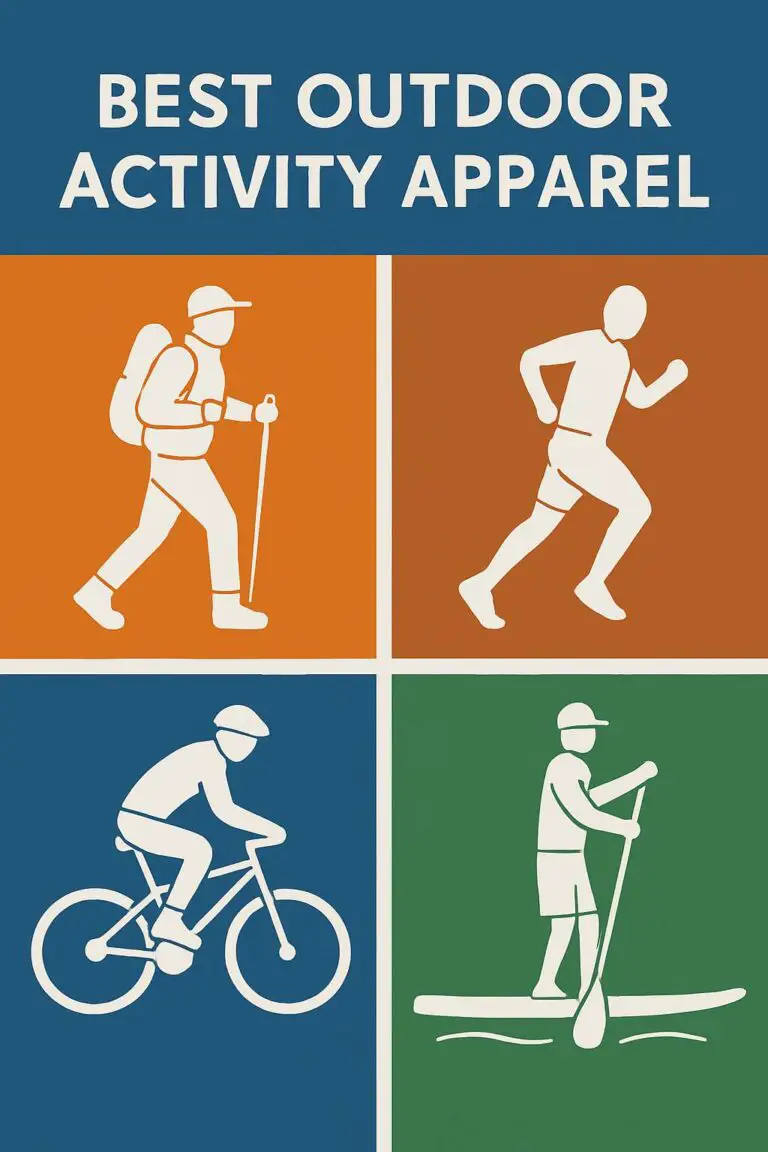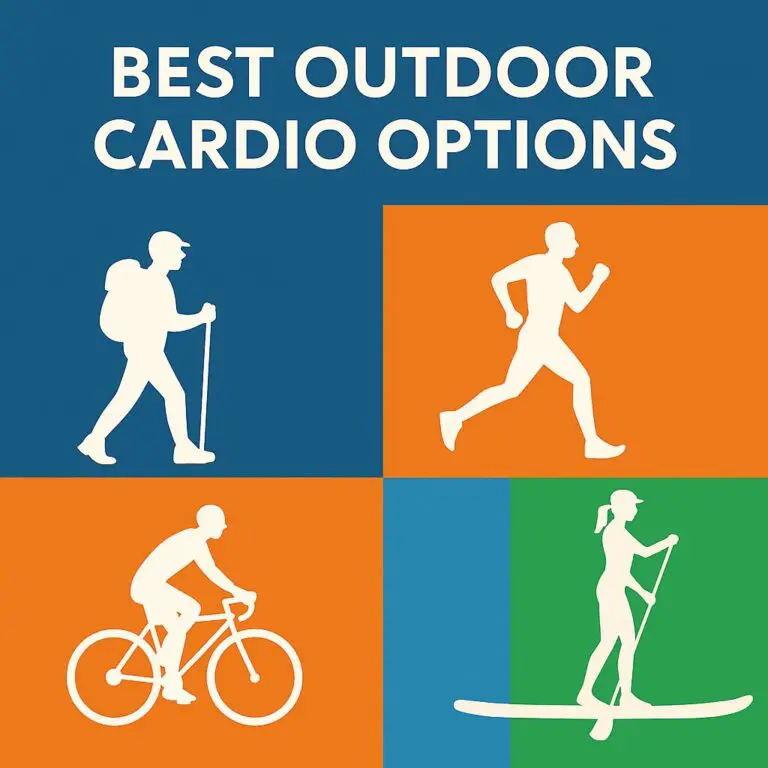Living an outdoor lifestyle is more than just a trend. It’s a way of life that brings countless benefits to your physical and mental well-being. By spending time outdoors, you can reduce stress, boost your mood, improve your fitness, and connect with nature. In this guide, I’ll explore how to live an outdoor lifestyle, the different aspects of living an outdoor lifestyle, and provide you with tips and strategies to make it a part of your everyday routine. Whether you’re a seasoned adventurer or just starting to explore the great outdoors, this guide will help you live a happier, healthier life.
Planning an Outdoor Lifestyle
Planning is an essential step in living an outdoor lifestyle. It’s important to set realistic goals and establish a routine to make outdoor activities a regular part of your life. Here are five tips to help you plan your outdoor lifestyle:
- Set realistic goals: Identify the outdoor activities that interest you and set achievable goals. For example, if you’re new to hiking, start with a short, easy trail and gradually increase the difficulty level.
- Create a routine: Establish a routine for your outdoor activities. Schedule them into your calendar, just like you would with any other appointment. This will help you make time for outdoor activities and ensure that they become a regular part of your life.
- Explore new activities: There are countless outdoor activities to try, from hiking and camping to kayaking and rock climbing. Try new activities to keep your routine fresh and exciting.
- Find outdoor partners: Finding someone to enjoy outdoor activities with can make it easier to keep to your routine. This can be a friend, family member, or even a local outdoor club.
- Keep track of progress: Keeping track of your progress can help motivate you to keep going. Record your achievements and milestones, take photos, or use a fitness tracker to monitor your progress. This will help you stay on track and see how far you’ve come.
You don’t have to become an outdoor expert overnight, so take the time to enjoy the journey and embrace the outdoors at your own pace.
Preparing for Outdoor Activities
Before you embark on any outdoor activity, it’s important to be prepared. Here are some essential steps to take:
- Invest in gear: Depending on the activity, you may need to invest in gear such as hiking boots, a tent, or a kayak. Research the gear you need and invest in high-quality equipment that will last for years.
- Safety considerations: Safety should always be a top priority when engaging in outdoor activities. Research the potential hazards of your chosen activity and take necessary precautions, such as wearing a helmet or life jacket.
- Prepare for different weather conditions: The weather can change quickly when you’re outdoors, so it’s important to be prepared for all conditions. Bring appropriate clothing and gear for the temperature and precipitation.
- Pack enough food and water: Outdoor activities can be physically demanding, so it’s important to pack enough food and water to keep you fueled and hydrated. Bring energy-rich snacks, such as trail mix or energy bars, and a reusable water bottle or hydration system.
- Know your limits: Outdoor activities can be challenging, so it’s important to know your limits and not push yourself too hard. Start with activities that match your fitness level, and gradually increase the difficulty level as you become more experienced.
- Plan for emergencies: Despite taking precautions, emergencies can happen. Plan for emergencies by bringing a first aid kit, a map and compass, a whistle, and a charged phone or communication device. Let someone know your planned route and expected return time.
Remember, the more prepared you are, the more you’ll be able to relax and enjoy your time outdoors.
Incorporating Outdoor Activities into Daily Life
Living an outdoor lifestyle doesn’t mean you have to spend every weekend in the wilderness. There are many ways to incorporate outdoor activities into your daily routine. Here are some ideas:
- Walk or bike to work: Instead of driving, walk or bike to work if possible. This is a great way to get some exercise and fresh air before and after work.
- Take your lunch break outside: Use your lunch break to get outside and enjoy the sunshine. Bring a picnic blanket and enjoy your lunch in a nearby park.
- Start a garden: Gardening is a great way to get outside and connect with nature. Even if you don’t have a large yard, you can start a small herb garden on your balcony or windowsill.
- Try outdoor workouts: Many exercises can be done outside, such as yoga, calisthenics, or running. You can find outdoor fitness classes or use apps to guide you through outdoor workouts.
- Explore your community: Take a walk or bike ride to explore your community. You may discover hidden gems, such as parks, trails, or scenic viewpoints, that you didn’t know existed.
- Make outdoor plans with friends: Instead of meeting up for dinner or drinks, plan outdoor activities with your friends. This can be a hike, a picnic, or even a game of frisbee.
It doesn’t have to be a big production, start small and find ways to enjoy the outdoors in your own way.
Eating for an Outdoor Lifestyle
Proper nutrition is essential for living an outdoor lifestyle. Here are 6 tips for eating for an active, outdoor lifestyle:
- Focus on whole foods: Whole foods, such as fruits, vegetables, whole grains, and lean proteins, provide the nutrients your body needs to fuel outdoor activities.
- Choose energy-dense foods: Outdoor activities require a lot of energy, so it’s important to choose foods that provide sustained energy, such as nuts, seeds, and dried fruit.
- Hydrate, hydrate, hydrate: Staying hydrated is crucial for outdoor activities, so make sure to drink plenty of water throughout the day. Electrolyte-enhanced drinks can also be useful for longer, more strenuous activities.
- Plan ahead: When planning outdoor activities, plan ahead for meals and snacks. Pack nutrient-dense foods that are easy to carry and store well, such as trail mix, fruit, energy bars, and sandwiches.
- Eat before and after outdoor activities: Fueling your body before and after outdoor activities can help improve your performance and recovery. Try to eat a meal or snack rich in complex carbohydrates and protein 1-2 hours before your activity, and eat a nutrient-dense meal or snack within 30 minutes after your activity.
- Avoid processed and sugary foods: Processed and sugary foods may give you a quick energy boost, but they can also lead to crashes and sluggishness. Avoid these types of foods and focus on whole, nutrient-dense options instead.
Planning ahead and making smart food choices will help you get the most out of your time in nature.
Overcoming Challenges to an Outdoor Lifestyle
While living an outdoor lifestyle can be incredibly rewarding, it’s not always easy. Here are some common challenges you may face and strategies for overcoming them:
- Lack of time: One of the biggest challenges to living an outdoor lifestyle is finding the time to do it. To overcome this challenge, try to incorporate outdoor activities into your daily routine, such as walking or biking to work or taking your lunch break outside.
- Inclement weather: Bad weather can put a damper on outdoor activities. To overcome this challenge, be prepared for all weather conditions by bringing appropriate clothing and gear. You can also explore indoor activities, such as rock climbing or yoga, on rainy days.
- Lack of motivation: It’s easy to fall into a rut and lose motivation for outdoor activities. To overcome this challenge, try new activities to keep your routine fresh and exciting. You can also find a friend or group to participate in outdoor activities with, which can provide motivation and accountability.
- Safety concerns: Outdoor activities can be inherently risky, and safety should always be a top priority. To overcome this challenge, research the potential hazards of your chosen activity and take necessary precautions. You can also consider taking a safety course or hiring a guide if you’re unsure.
- Lack of support: Living an outdoor lifestyle may not be supported by all of your friends and family. To overcome this challenge, seek out like-minded individuals who share your passion for the outdoors. You can join outdoor clubs or groups, attend events or workshops, or connect with others on social media.
With the right mindset and support system, you can make the great outdoors a regular part of your life.
Conclusion
In conclusion, living an outdoor lifestyle is an incredible way to improve your physical and mental well-being. By planning, preparing, and incorporating outdoor activities into your daily routine, you can experience the joys of nature and improve your overall health. While there may be challenges along the way, with the right mindset and strategies, you can overcome them and make the great outdoors a regular part of your life.
Remember to set achievable goals, establish a routine, and try new activities to keep things fresh and exciting. Invest in high-quality gear and take necessary safety precautions, pack nutrient-dense foods, and stay hydrated to fuel your body for outdoor activities. If you face challenges such as a lack of time, motivation, or support, seek out like-minded individuals and find ways to overcome them.
Living an outdoor lifestyle is about embracing the beauty and wonder of nature and taking care of your mind and body. So go out there, explore, and enjoy all that nature has to offer!








